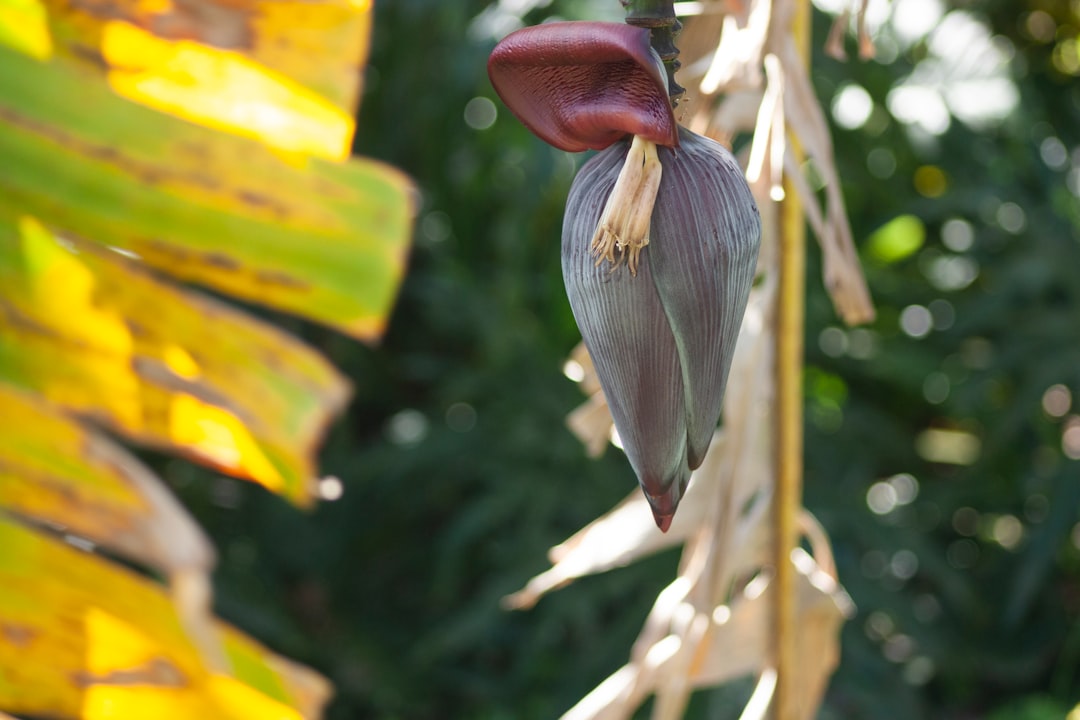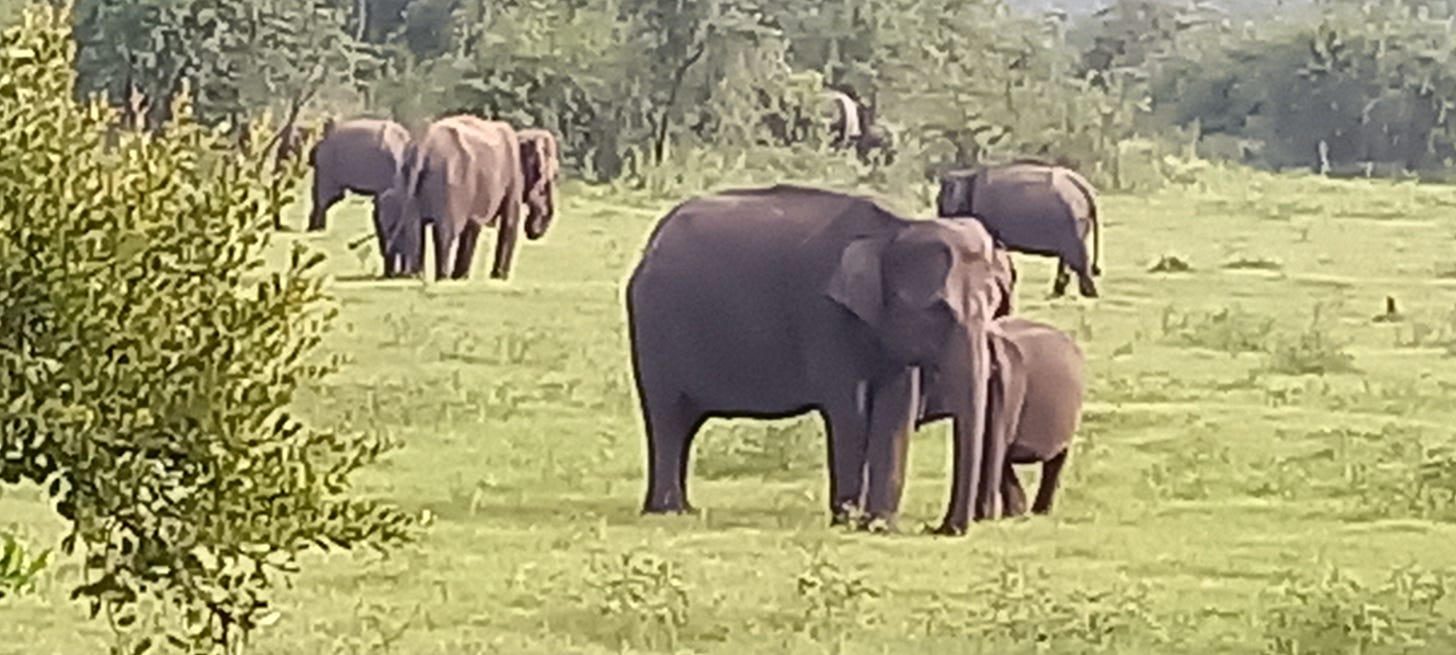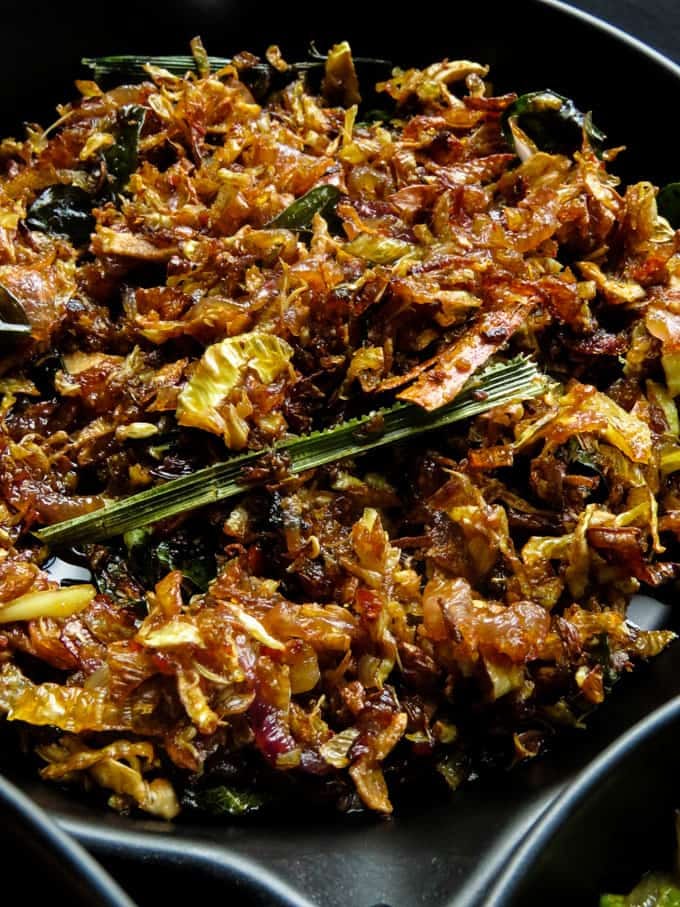Yes, we have SO many bananas
A recipe for Sri Lankan kesel muwa banana flower relish
What's the difference between a banana and an elephant? One's yellow and the other's an elephant.
Until two weeks ago, I believed that aside from inspiring a ream of really silly jokes, a banana was a long yellow fruit good to stash into a pocket when hiking for its potassium-rich, energy-restoring abilities. A spell in Sri Lanka teaches you it's so much more - as is the country.
I had lazily assumed Sri Lanka was India Lite. That's as misguided as assuming the Scots are anything like the English just because we share a landmass. If you suppose the Sri Lankans even share a cuisine with India, come and discover how thrillingly wrong you are. It mostly vegetarian, a series of brightly coloured dishes, each scented with layers of different spices rather than eye-wateringly hot, and served around a mound of rice with cooked or raw relishes.
Even Sri Lankan bananas are different - certainly from those sliced onto breakfast cereal - or whatever you do with yours. (I squash mine with a fork, snow them with sugar and souse them in evaporated milk. Cream wrecks this luxury recipe.)
Driving around Sri Lanka I've spotted the common bananas familiar from supermarkets across Europe, the UK and US. But I've also been introduced to green ones, brown ones, purple ones, and even red bananas. There are bananas the size of fat fingers, bananas that are almost tubular, and bananas used for cooking as starchy and dense as a boiled potato and known in some countries as plantains to distinguish them from dessert bananas.
At the Felix Project, a London-based charity that daily collects tonnes of fresh nutritious food that can't be sold (often because the public is unclear about the difference between a Best Before label and a Use By one) and redistributes it to charities and schools, the most frequently supplied fruit is the banana. It's always the Cavendish banana, the world's most common variety, widely marketed as the Chiquita banana.
The Cavendish is preferred by commercial producers since it can stay green for several weeks after being harvested which makes it ideal for shipping to Europe and the US. Plus, it’s disease-resistant, it has a high yield rate, its flesh is sweeter than other varieties, it’s seedless, and looks good on display in stores. Yet worldwide, over 1000 types of banana are grown, in Central and South America, and South East Asia, India, and Sri Lanka, although only half are edible.
Almost all bananas are a sub-group of one of two wild species - Musa acuminata and Musa balbisiana - that began to be developed in Africa into the banana we know today, around 650 AD. Before the 1960s, Gros Michel, known as Big Mike for its ability to grow to 23 feet high, was the first type to be cultivated on a large scale. Then disease devastated the crop and growers switched to Cavendish.
If you travel through Sri Lanka as I am currently doing, bananas for sale along the roadside are unlikely to be Cavendish. Of all the varieties identified worldwide, 29 of them are grown across this island, in commercial plantations, in small orchards and in pretty much every domestic garden.
Sadly, aside from the Cavendish, we're unlikely to taste any of them unless we travel to Sri Lanka - which you should seriously consider doing. (The country is lush, rising from beaches offering some of the best surfing conditions up to cool mist-shrouded mountains where the tea grows. It’s populated by smiling Sri Lankans who approach not to beg for a hand-out but to welcome you proudly to their country which is currently suffering a crippling financial crisis that is bringing workers in the hospitality business to their knees. The countryside bulges with ostentatious peacocks displaying at every opportunity. Yet Sri Lanka has opted to make its national bird the cheeky forest chicken. What's not to admire about a country that makes that modest choice?)
Sri Lanka does export its bananas, but not in significant quantity to Europe, the UK or US. Sad for us, they go to Saudi Arabia, Qatar, the United Arab Emirates, Kuwait, and Bahrain, bringing in some $14 million. It's a drop in the ocean of debt the country is currently mired in.
Bananas are marshalled into three main groups, each with its own variety: the Cavendish, with three main types - the Chiquita, the Dwarf and Giant Cavendish; the Kolikuttu with four main ones, including the red banana; and the Mysore, with two varieties popular for being cheaper.
Botanically a berry, bananas grow with their fruits reaching upwards like an apostrophe, not downwards like a comma, on 'trees' that can reach 25 feet high. But (pub quiz alert) banana trees aren't trees at all. Bananas are classified as herbs. This is because their stems don't have the woody tissue of trees and are propagated not by seeds or cuttings like trees but by corms. The fruits develop in a hanging cluster made up of tiers known as ‘hands’, with up to 20 bananas to a single tier. A banana stem can comprise as few as 3 and as much as 20 tiers and weigh 30 to 50 kilograms/66-110 lbs.
Almost all of the banana plant is put to use. The stalks provide fibres that are turned into clothing, rugs and even paper-making. Banana blossoms, which are not hard to find in African, Caribbean, Chinese and Middle East markets, make salads when raw and relishes when cooked.

This Sri Lankan relish is made in bulk and stored in jars in the fridge to serve alongside curries. But would be delicious with grilled meat, steamed fish, and plain rice or rice noodles.
1 banana flower, washed
2 cups of water
1/4 teaspoon turmeric powder
6 medium-sized onions sliced fine
500ml/16fl oz vegetable oil
2g fresh or dried curry leaves - about 60 (both available at Asian markets
3 cardamom pods lightly bruised
1-inch stick of Sri Lankan cinnamon
1/2 teaspoon red chilli powder
1 tablespoon dried chilli flakes
1 teaspoon curry powder, toasted in a dry pan
1 teaspoon sugar
2 tablespoons tamarind juice
Salt to taste
Stir the turmeric and salt into a pan of the water. Wash the banana flower then remove the layers of purple skin and flowers, about three, until you reach the heart of the flower.
Lay the banana flower on a chopping board, cut off the stem and discard and slice the flower into into thin strips.
Soak in them in the salted water for 5 minutes then drain and squeeze out any excess water - a sticky business.
Peel and slice the onions and set aside.
Pour a generous one and a half cups of oil into a deep saute pan and heat over medium heat. Do not let the oil smoke.
Add the chopped banana flower carefully in small batches as it will spit. Fry 3-5 minutes till golden brown.
Remove with a slotted spoon to paper towels to drain then repeat with the onions.
Reduce any remaining oil on the pan to 3 tablespoons then add the curry leaves (stir-frying dried curry leaves briefly to release their flavour), followed by the cardamom, cinnamon, chilli powder, curry powder, chilli flakes, and saute 2-3 minutes then add the sugar, tamarind juice, and cook for further 2 minutes.
Reduce heat to low and add the fried banana flower and sauté 3-4 minutes to incorporate and season to taste.
Cool then transfer to clean jars and store in the fridge.








Farmers markets in Hawaii offer a wide range of banana types. I like the small red ones. I’ll try this later this month when we visit Maui.
As always, I enjoyed reading your work, this time because it brought back so many memories - strange, isn't it, how so many of our memories are bound up with food? Or perhaps, not so strange, considering its pervading influence on our lives. I grew up in Kenya, and the market and street vendors were a constant source of delight - had Mother but known my ayah occasionally bought me an edible treat from them, she'd have had a fit! - and the sheer variety of bananas was fascinating. Ladies' fingers weren't okra, they were a type of very sweet, very small banana, and plantains cooked into a very quick and tasty pudding - halved, fried in butter, spread with jam and covered with meringue, then fiished under the grill: a childhood favourite! And my grandmother had her own bananas in the garden. As with so many other fruits, there's no comparison with one fresh-picked, and the supermarket variety!